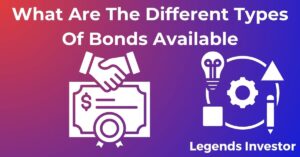Introduction to Bond Funds: An Investor’s Primer
Bond funds offer a valuable alternative to investing in individual bonds, providing a diversified approach to fixed-income investing. Whether you’re an experienced investor or new to the bond market, understanding bond funds and how they compare to individual bonds is crucial for making informed investment decisions. This primer will explain the basics of bond funds, compare them to individual bonds, and help you determine which investment might be right for your portfolio.
What Are Bond Funds and How Do They Work?
Defining Bond Funds
Bond funds are mutual funds or exchange-traded funds (ETFs) that invest primarily in bonds and other fixed-income securities. They pool money from multiple investors to purchase a diversified portfolio of bonds. This diversification helps spread risk and can provide a more stable income stream compared to investing in individual bonds.
Types of Bond Funds
Bond funds come in various types, each with its own investment strategy and risk profile:
- Government Bond Funds: Invest in bonds issued by government entities, such as U.S. Treasury securities. These are generally considered low-risk.
- Corporate Bond Funds: Focus on bonds issued by corporations. They offer higher yields but come with higher risk compared to government bonds.
- Municipal Bond Funds: Invest in bonds issued by state and local governments. These often provide tax-free income but can have higher credit risk.
- High-Yield Bond Funds: Invest in bonds with lower credit ratings, offering higher yields but with increased risk.
- International Bond Funds: Include bonds from issuers outside the investor’s home country, providing geographic diversification.
Comparing Bond Funds to Individual Bonds
While bond funds offer diversification and professional management, individual bonds provide direct ownership and the potential for more control. Bond funds do not guarantee a fixed return or maturity date, unlike individual bonds, which have set terms and interest payments.
Understanding Individual Bonds: The Basics
Defining Individual Bonds
Individual bonds are debt securities issued by corporations, governments, or other entities. When you purchase a bond, you’re essentially lending money to the issuer in exchange for periodic interest payments and the return of the principal amount at maturity.
How Purchasing Individual Bonds Works
When buying individual bonds, you can purchase them directly from the issuer or through a broker. Bonds can be bought at face value, at a premium, or at a discount, depending on market conditions and interest rates.
The Implications of Bond Maturity and Interest Rates
Bond maturity refers to the date when the bond’s principal amount is returned to the investor. The bond’s interest rate, or coupon rate, affects the bond’s yield and price. Long-term bonds typically offer higher yields but are more sensitive to interest rate changes.
Risks and Returns Associated with Individual Bonds
Individual bonds come with risks, including interest rate risk (the risk that rising rates will decrease the bond’s value), credit risk (the risk that the issuer will default), and reinvestment risk (the risk that interest payments will be reinvested at lower rates). The returns from individual bonds are relatively stable, but the investor must manage these risks.
Demystifying Bond Funds: Structure and Operation
How Bond Funds Pool Investor’s Money
Bond funds pool money from many investors to build a diversified portfolio of bonds. This diversification helps to mitigate risk by spreading investments across various issuers and types of bonds.
The Role of a Fund Manager in a Bond Fund
A fund manager oversees the bond fund’s portfolio, making decisions about which bonds to buy, hold, or sell. The manager aims to achieve the fund’s investment objectives, such as maximizing income or balancing risk.
Diversification Benefits of Bond Funds
Bond funds offer instant diversification, reducing the impact of any single bond’s poor performance on the overall portfolio. This can be particularly beneficial in managing credit risk and interest rate risk.
Understanding Net Asset Value (NAV) in Bond Funds
The NAV of a bond fund represents the per-share value of the fund’s assets minus its liabilities. It is calculated daily and reflects the value of the fund’s holdings. The NAV is used to determine the price at which shares of the fund are bought and sold.
Comparing Returns: Bond Funds vs. Individual Bonds
How Returns Are Generated Differently
Bond funds generate returns from the interest payments of the bonds they hold and any capital gains from buying and selling bonds. Individual bonds generate returns primarily from their coupon payments and the return of principal at maturity.
Interest Payments and Capital Gains
Bond funds typically distribute interest payments to investors periodically, while individual bonds provide interest payments directly to the bondholder. Capital gains for bond funds can arise from selling bonds at a profit, while individual bonds realize capital gains only if sold before maturity at a price higher than the purchase price.
The Impact of Bond Fund Expenses on Returns
Bond funds charge management fees and other expenses that can reduce returns. These expenses cover the cost of managing the fund and can vary between funds. It’s important to compare fees and understand their impact on overall returns.
Reinvestment Opportunities and Dollar-Cost Averaging
Bond funds offer reinvestment opportunities through automatic reinvestment of interest payments, which can benefit from dollar-cost averaging. This strategy involves investing a fixed amount of money at regular intervals, potentially smoothing out market volatility.
Risk Analysis: Evaluating Bond Funds Against Individual Bonds
Interest Rate Risk and Credit Risk
Both bond funds and individual bonds are subject to interest rate risk and credit risk. Bond funds may offer some mitigation through diversification, while individual bonds expose investors directly to the creditworthiness of the issuer.
The Effect of Economic Changes
Economic changes, such as fluctuations in interest rates and inflation, affect both bond funds and individual bonds. Bond funds may provide more stability through diversification, but individual bonds offer predictable income if held to maturity.
Liquidity Concerns
Bond funds generally offer higher liquidity than individual bonds, as shares can be bought or sold daily. Individual bonds may be less liquid, particularly if they are not widely traded or if the market conditions are unfavorable.
Mitigation of Default Risk
Bond funds reduce default risk through diversification across multiple issuers. In contrast, investing in a single individual bond exposes investors to the default risk of that particular issuer.
The Impact of Fees: Understanding Costs in Bond Funds
Different Fee Structures in Bond Funds
Bond funds typically charge management fees, administrative fees, and sometimes sales charges (loads). These fees vary between funds and can impact overall returns.
Comparison with the Cost of Buying and Selling Individual Bonds
Buying and selling individual bonds may involve brokerage fees, bid-ask spreads, and other transaction costs. While bond fund fees can be higher, they provide diversification and professional management.
The Effect of Fees on Investment Returns
Fees can significantly impact the returns of bond funds. It’s essential to evaluate the fee structure and consider how it affects net returns. Lower-cost bond funds may offer better long-term performance.
How to Evaluate Fee Structures When Selecting a Bond Fund
When selecting a bond fund, review the fee structure, including management fees, expense ratios, and any additional charges. Compare these with the potential benefits of diversification and professional management.
Flexibility and Control: Choosing What’s Right for You
Assessing the Level of Control Over Investment Choices
Individual bonds offer more control over specific investments, including maturity dates and credit quality. Bond funds provide less control but offer professional management and diversification.
The Flexibility of Buying or Selling Within Bond Funds
Bond funds offer flexibility in buying and selling shares. Investors can enter or exit positions without dealing with individual bond transactions, which can be less liquid and more complex.
Case Scenarios Where Individual Bonds Provide More Control
Individual bonds may be preferable for investors who wish to tailor their portfolios with specific maturities or credit qualities. They also provide predictability if held to maturity.
The Trade-Off Between Convenience and Customization
Bond funds provide convenience and diversification, while individual bonds offer customization and control. Consider your investment preferences, risk tolerance, and financial goals when making a decision.
Tax Considerations: How Bond Funds and Individual Bonds Differ
Understanding Tax Implications for Bond Fund Distributions
Bond fund distributions are subject to income tax, which includes interest income and capital gains. Tax treatment can vary based on the type of bonds held in the fund and the investor’s tax bracket.
Tax Benefits or Obligations for Individual Bondholders
Interest income from individual bonds is generally taxable, but certain bonds, such as municipal bonds, may offer tax-exempt income. Investors should consider the tax implications of their bond investments.
Strategies for Tax-Efficient Investing in Bonds and Bond Funds
To maximize tax efficiency, consider investing in tax-exempt municipal bonds or bond funds that focus on tax-advantaged securities. Tax-loss harvesting and proper asset allocation can also help manage tax liabilities.
The Role of Tax-Exempt Bonds and Funds
Tax-exempt bonds and bond funds can provide significant tax benefits, especially for high-income investors. They can reduce taxable income and enhance after-tax returns.
Making the Decision: Bond Funds or Individual Bonds?
Factors to Consider
When deciding between bond funds and individual bonds, consider factors such as investment goals, risk tolerance, time horizon, and the level of control you desire. Bond funds offer diversification and professional management, while individual bonds provide direct ownership and potential customization.
Pros and Cons of Investing in Bond Funds
Pros:
- Diversification across multiple bonds
- Professional management
- Liquidity and ease of buying/selling
Cons:
- Fees and expenses
- Less control over individual bonds
- Potential for lower returns compared to individual bonds
Pros and Cons of Investing in Individual Bonds
Pros:
- Direct ownership and control
- Predictable income if held to maturity
- Customization based on credit quality and maturity
Cons:
- Less diversification
- Potentially lower liquidity
- Complexity in managing and trading
Seeking the Advice of a Financial Professional
Given the complexities of bond investments, consulting a financial professional can provide personalized guidance. They can help assess your financial situation, investment goals, and risk tolerance to determine the best approach for your bond investments.
In summary, both bond funds and individual bonds have their unique advantages and disadvantages. Understanding these differences can help you make an informed decision that aligns with your financial goals and investment strategy. Whether you choose bond funds for their diversification and management or individual bonds for their control and predictability, a well-thought-out approach will enhance your investment portfolio.



